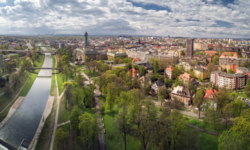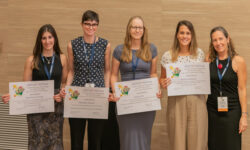Photosynthesis under Light Stress—Methods to Detect Acclimation and Damage to the Photosynthetic Apparatus

The UV4Plants Training School, Ostrava (14. – 17. 10. 2025): The UV4Plants Training School was organised to provide early-career researchers and students with hands-on experience in methods commonly used to investigate plant responses to ultraviolet (UV) radiation. Instead of working on unrelated samples, participants performed an experiment under near-real research conditions. The central question addressed whether barley leaf angle, vertical or horizontal, modulates the spatial distribution of UV-protective pigments and how this relates to the severity of acute UV-B-induced damage, as evaluated by photosynthetic performance related parameters (Fv/Fm, thylakoid-membrane integrity, and CO₂-fixation rate). The experiment comprised two phases. First, prior to any UV-B exposure, the acclimatory state of leaves grown at different angles, specifically the distribution of UV-absorbing pigments and the associated leaf optical properties,were determined. Second, the acute effects of UV-B were examined in primary leaves developed at these contrasting angles, enabling a direct comparison of pigment distribution and physiological damage. Participants received practical training in: (i) basic HPLC profiling of UV-absorbing pigments; (ii) characterisation of leaf optical properties, including non-destructive in vivo estimation of UV-screening compounds, spectrofluorimetric analysis of chlorophyll excitation spectra in the UV range, and spectroradiometric measurements of leaf reflectance; (iii) functional analysis of Photosystem II…





